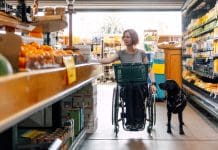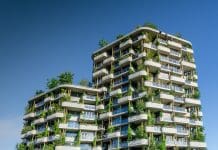The publication of updated guidance aimed at making buildings more inclusive presents a golden opportunity for property developers and designers to look again at accessibility
The new BS 8300 applies to a wide range of commercial and administrative buildings and to features ranging from steps and handrails to loos and car parks. The document recommends rather than requires, but our view is that it should not be ignored.
Because the provisions of BS 8300 are purely for guidance, there are no penalties for failure to adopt them. But in the event of a claim for discrimination, a business that can demonstrate adherence to BS 8300 will be on more solid ground that one that cannot.
The proactive way to look at the document, and the view which is being adopted increasingly, is that improvements to accessibility are a good thing. They make your premises easier for all people to visit, and if you’re a business that will generally mean more customers spending more money.
The spending power of disabled people and their companions is known as the “purple pound” and in 2017 it was calculated at £249bn per annum. For an example of the implications, just consider that if disabled customers can’t park in a suitable space, they will spend their money elsewhere and the businesses that cannot accommodate them will lose out.
The updated standard replaces the edition that was released in 2009 and has now been split into two parts. Both documents concern themselves with accessibility and with inclusive design.
BS 8300 – 1 looks at the external environment in greater detail than before. For example, different types of street furniture, increased information for way-finding signage, directions for which routes are accessible and step-free, and greater detail regarding external lighting.
Its guidance may apply to permanent visitor attractions and temporary external events, public art space, refreshment areas, water features, trees, planting and soft landscaping.
BS 8300 – 2 includes guidance on internal features such as how handrails start and finish, the position of nosings on steps and the gradient of ramps.
The recommended amount of space allocated for wheelchair spaces in audience seating has been doubled to 2%. The recommended width of accessible WCs is increased from 1500mm to 1700mm and the new document also includes details for an enlarged cubicle for ambulant disabled people.
The guidance surrounding accessible bedrooms in hotels has been amended and student accommodation has now been added. Another key area that has been addressed is parking. The document recommends that larger developments offer a range of parking spaces for a variety of specific uses, such as separate parent/guardian and child parking and larger bays for vehicles including camper vans, minibuses and cars with caravans or trailers.
It also suggests that the use of designated accessible spaces should be monitored regularly by the provider of the parking to limit misuse by non disabled motorists and to maintain the appropriate number of designated spaces for the number of disabled motorists using the building or location.
BS8300 influences a great deal of design work. It is for refurbishments as well as new build and is one of the benchmarks that is used when it comes to auditing buildings for accessibility.
When looking at accessibility, you should not just consider the needs of wheelchair users. There are people with other impairments – people who are partially sighted and blind, who have hearing impairments, cognitive impairments or poor manual dexterity. Things we class as hidden impairments, and which demand a certain type of foresight from the earliest stage of the design process.
The overarching principle is that everyone, including disabled and older people with particular access requirements, should be able to access and use a building, place or space easily, comfortably and independently, including being able to escape in the event of fire or other emergency.
Ian Streets
About Access
Tel: 01482 651101
Tel: 07957 564182
Please note: this is a commercial profile.













